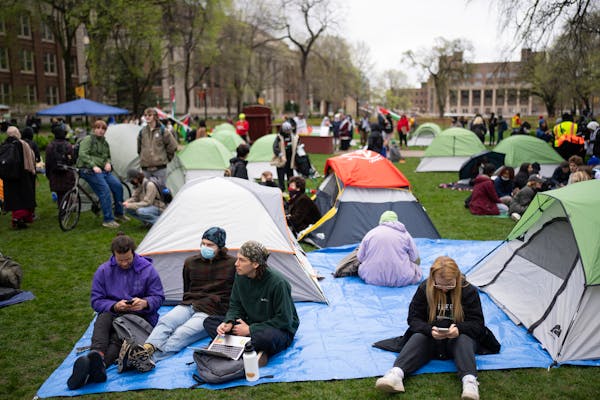In the week since opening Minnesota's door to community solar gardens, Xcel Energy Inc. said Friday that 427 applications have arrived from energy developers, a much bigger response than anticipated.
The Minneapolis-based company said the applications propose a total of 420 megawatts of solar output, or the equivalent of a sizable power plant. A megawatt is 1 million watts.
"It is a gaudy number — I am a little shocked," said solar developer Rob Appelhof, president of Cedar Creek Energy of Coon Rapids, which has not yet submitted its four planned solar gardens.
Solar gardens are large, centrally located projects with hundreds or thousands of solar panels. They are built and operated by energy developers under 25-year power-sales contracts with Xcel. Subscribers sign contracts with solar gardens, paying up front or over time for a share of the output.
Xcel, which serves 1.2 million Minnesota electric customers, said it is too soon to say if all of the proposed projects will meet program requirements or be developed. The list of applications wasn't released. Xcel also has a community solar garden program in Colorado, but it has a cap on how much can be built.
Appelhof said that energy developers at a later stage must put up money —$100,000 for a 1-megawatt array of solar panels, the maximum size per project. At that point, he said, many projects could drop out unless financing, arrangements for a site and enough interested customers are in place.
Even so, solar advocates are pleased with the response.
"It is exciting that commercial projects are coming together," said Michael Noble, executive director of Fresh Energy, a St. Paul nonprofit that has helped develop and advocate renewable energy policies, including the solar garden program. "Minnesota has been way behind on solar power and it looks like we are going to catch up with other states."
Xcel officials had projected that about 100 megawatts of solar gardens would get built in the first year. But the program has no cap on the number of gardens. It is entirely driven by consumer demand and the ability of developers to secure sites for large solar arrays and financing.
The program makes solar possible for people without the need to put panels on their properties. It is expected to appeal to homeowners with shady lots, condo owners confronting rooftop restrictions and renters. Appelhof said many companies also are interested.
Solar gardens were authorized under a 2013 Minnesota energy law that also requires investor-owned utilities to get 1.5 percent of their electricity from solar by 2020. Only Xcel was required by law to offer solar gardens.
Under policies approved by the Minnesota Public Utilities Commission, the utility compensates subscribers on their bills at solar-friendly rates. Subscribers stand to benefit because the payment rates exceed the retail price they pay for electricity.
The regulations for the gardens require insurance and other consumer protections and disclosures, including terms for early termination if a customer moves out of Xcel's service area.
David Shaffer • 612-673-7090 Twitter: @ShafferStrib
